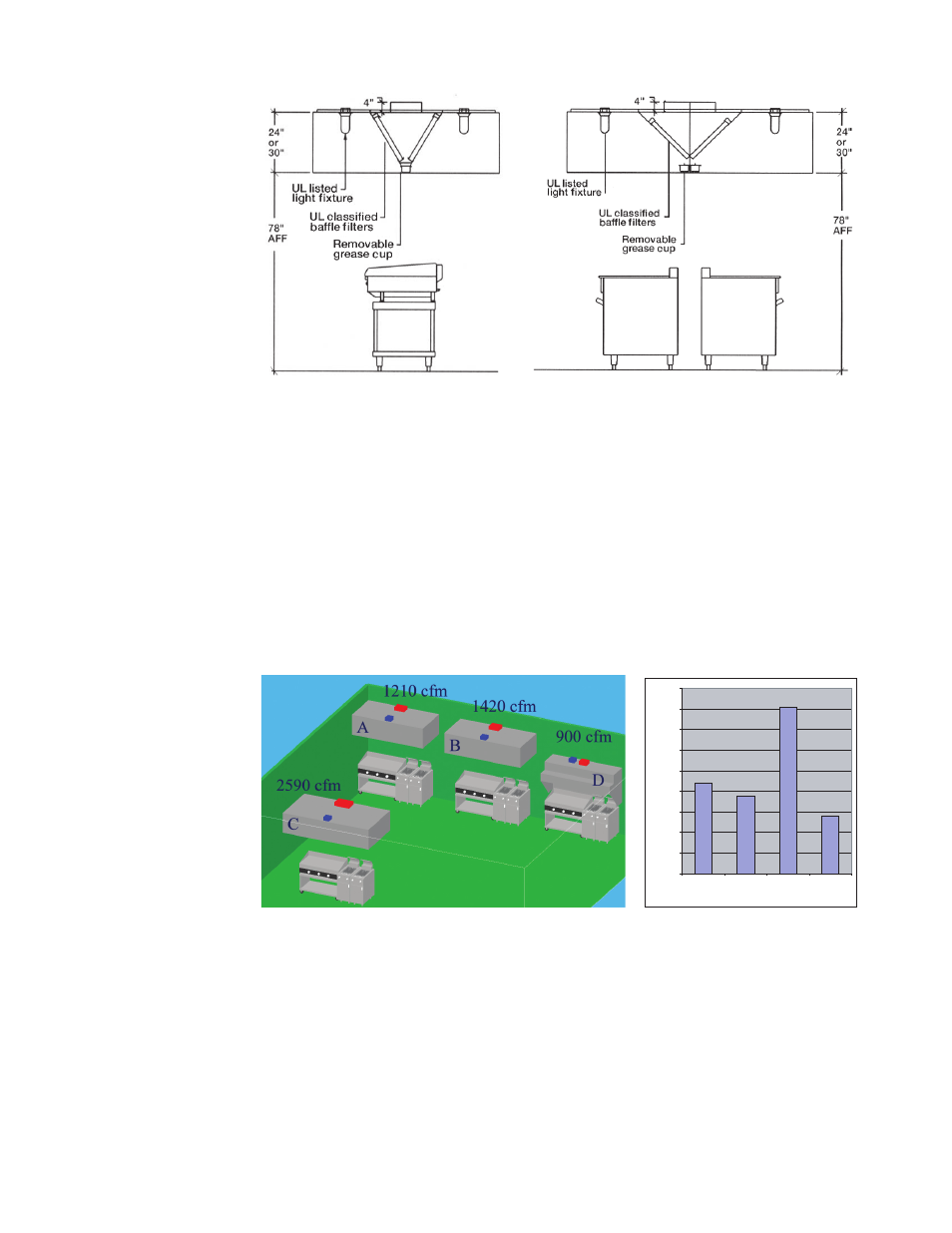Retrotec USACE User Manual
Page 268

D138 ENERGY & PROCESS ASSESSMENT PROTOCOL
Figure D226. Single-island canopy hood (left), double-island canopy hood (right).
To the extent that it is feasible, change the location and colocation of kitchen
equipment to increase local exhaust capture effi ciency: position cooking appli-
ances close to the walls and avoid island installations when possible or back to
back (Figure D227). Generally, for the identical (thermal plume) challenge, a
single-island canopy hood requires more exhaust than a wall-mounted canopy
hood, and a wall-mounted canopy hood requires more exhaust than a proximity
(backshelf) hood. The performance of a double-island canopy tends to emulate
the performance of two back-to-back wall canopy hoods, although the lack of a
physical barrier between the two hood sections makes the confi guration more
susceptible to cross-drafts.
0
200
400
600
800
1000
1200
1400
1600
1800
A
B
C
D
System configuration
A
nnual
ener
gy
c
o
s
ts
, $
Figure D227. Effect of appliance position on the energy cost: (a) appliances in the corner with
canopy wall hood, (b) appliances at the wall with canopy wall hood, (c) appliances in the middle
of the space with canopy island hood, (d) appliances at the wall with close proximity back-shelf
hood (Livchak Workshop 2007).
